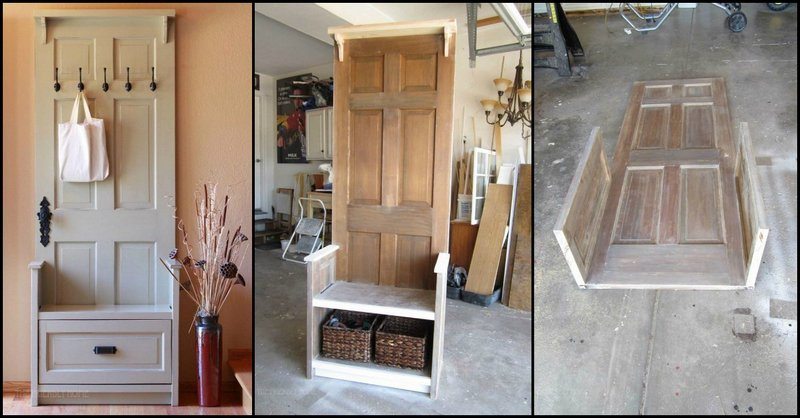
If you happen to have an old door just standing in your garage or workshop, then this project might be a practical way to reuse it. This door entry bench is made from two leftover solid wood doors from a previous hallway closet conversion project.
Solid wood doors are perfect building blocks for making your own entry bench. They’re very sturdy, easy to work with and require very little modification. They can be painted or stained depending on the finish you prefer.

This door entry bench is perfect for storing bags, coats, caps, keys, shoes, and other items you usually leave in the entry. It even has a built-in drawer! The size is also perfect as it doesn’t take a lot of hallway space.
Buying a new entry bench or making one from scratch can be expensive. This door entry bench on the other hand is unbelievably affordable. Most of the timber is either reclaimed or scrap, and all that is needed to be bought are the hardware and finishing materials that only cost around $53!
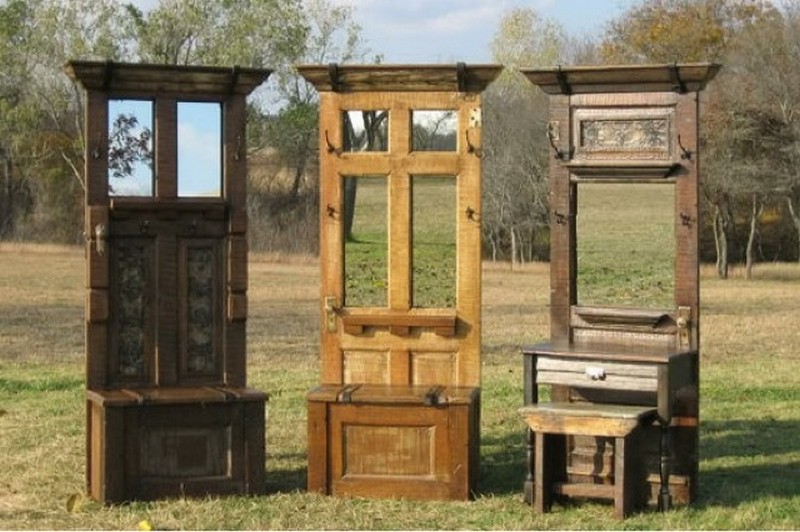
Could you use one of these in your home? What would you change to improve the potential of this door entry bench?
Building a Door Entry Bench
Materials
- 2 Old Doors
- Old Shelf/Extra Wood Board from previous projects
- 3/4″ Plywood
- Wood Glue
- Full Extension Drawer Glide
- Hooks and Drawer Pull
- Paint and Wood Finish
Tools
- Sander
- Table Saw
- Kreg Jig
- Paint Brush
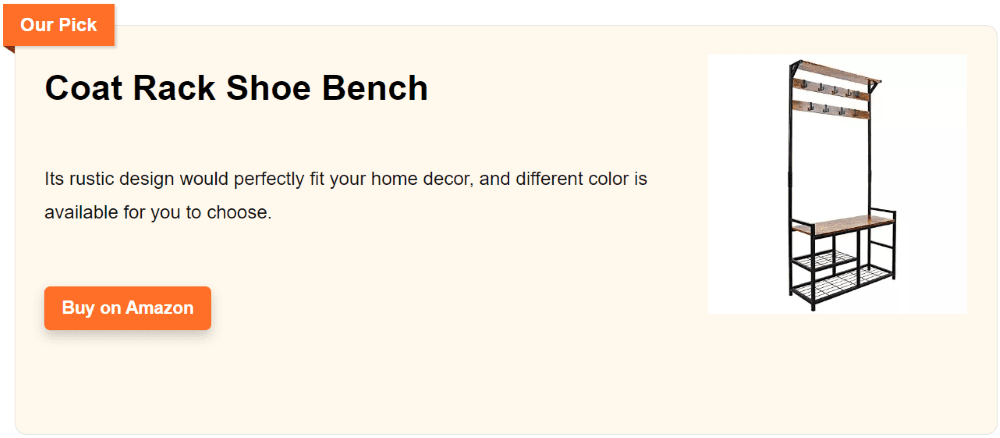
Instructions
Prepare Your Materials
Start by inspecting the old doors and wood boards for any nails, screws, or rough edges. Use the sander to smooth out all surfaces. This step ensures that your bench will be safe to use and ready for painting or staining later on.
Cut the Doors to Size
Decide on the height and width of your bench. Use the table saw to cut one door to serve as the backrest. Cut the second door to create the seat and sides of the bench. Measure twice and cut once to ensure accuracy.
Construct the Bench Frame
Cut the 3/4″ plywood to form the base and internal supports of the bench. Use the Kreg Jig to drill pocket holes for joining the plywood pieces without visible screws. Assemble the frame using wood glue and screws, ensuring it fits within the bench’s base and backrest.
Attach the Backrest
Apply wood glue to the edges of the bench frame where the backrest will attach. Secure the door used for the backrest to the frame using screws. Ensure it’s perfectly vertical and aligned with the frame.
Install the Seat
Place the second door or wood board on top of the frame to serve as the seat. Secure it with screws from underneath to hide the screw heads. For added durability, you can also use wood glue along the edges before attaching it with screws.
Add the Drawer Glide
Measure and cut the space for the drawer beneath the seat, using the full extension drawer glide as a guide for width. Install the glide according to the manufacturer’s instructions, ensuring that it’s level and centered.
Build and Install the Drawer
Use leftover plywood or an old shelf to construct the drawer. Cut pieces for the front, back, sides, and bottom of the drawer. Assemble using wood glue and screws. Attach the drawer pull to the front. Install the drawer into the bench, ensuring it slides smoothly.
Apply Finishes
Fill any screw holes or imperfections with wood filler. Once dry, sand the entire bench for a smooth finish. Apply your chosen paint or wood finish with a paint brush, following the grain of the wood. Allow ample drying time between coats.
Add Hooks and Final Touches
Screw in hooks to the backrest or sides of the bench for hanging coats, bags, or hats. Consider adding cushions or pillows for extra comfort on the seat.
Enjoy Your Bench
Place your new door entry bench in your home’s entryway. It’s now ready to be used for seating, storage, and adding a touch of personal style to your space.
Click on any image to start the lightbox display. Use your Esc key to close the lightbox. You can also view the images as a slideshow if you prefer 😎
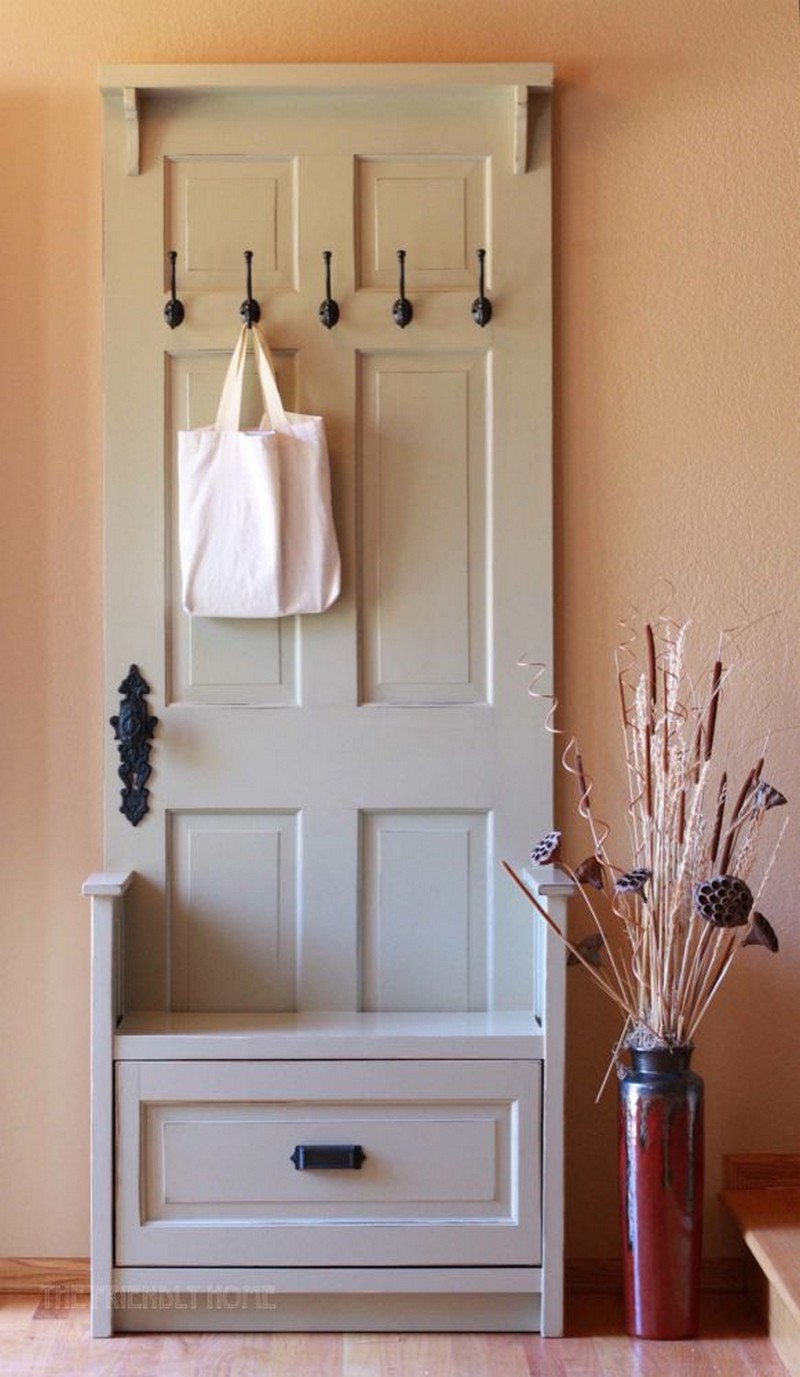
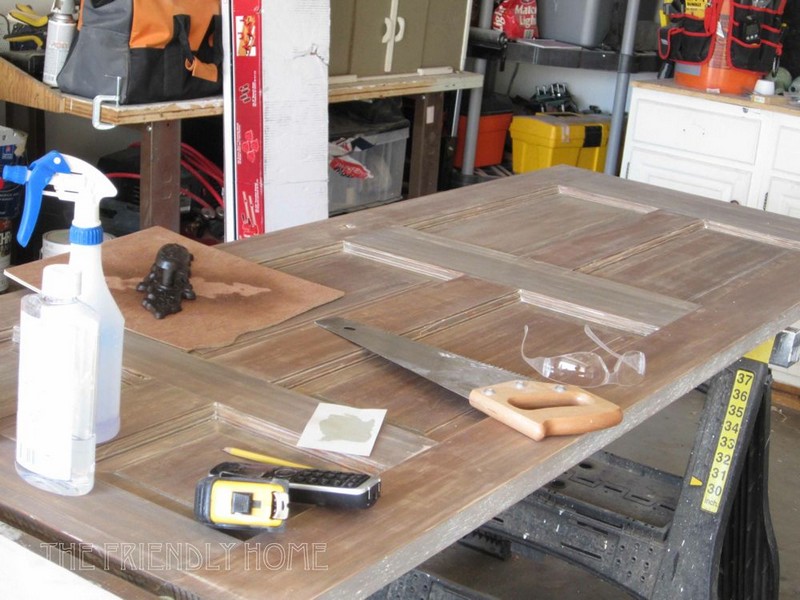
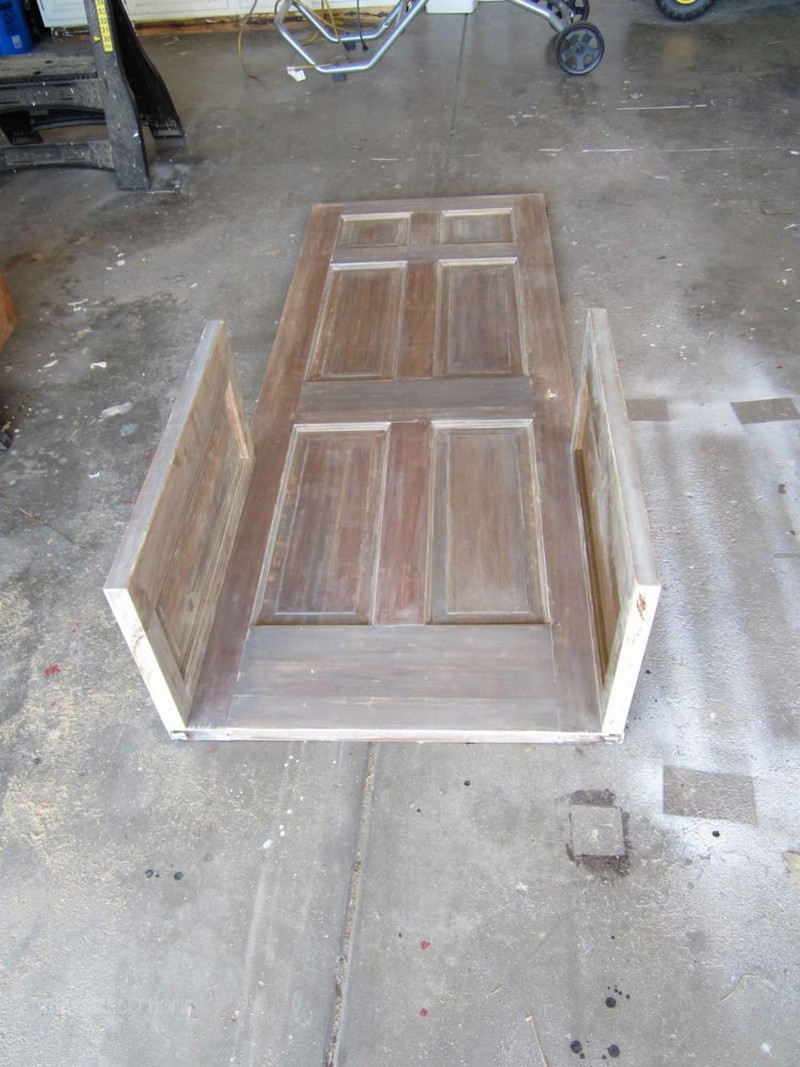

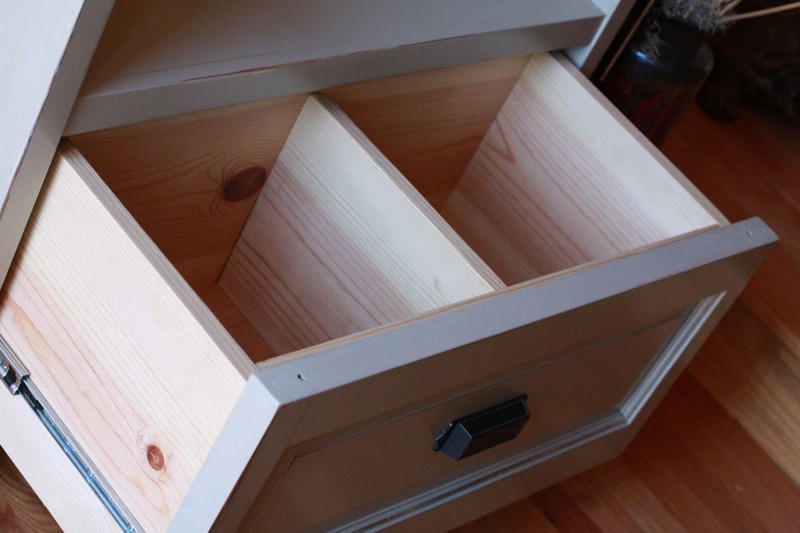
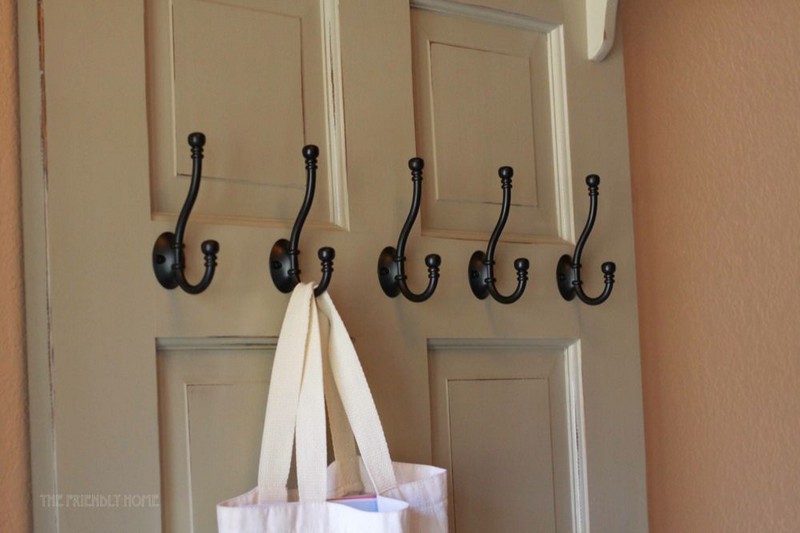
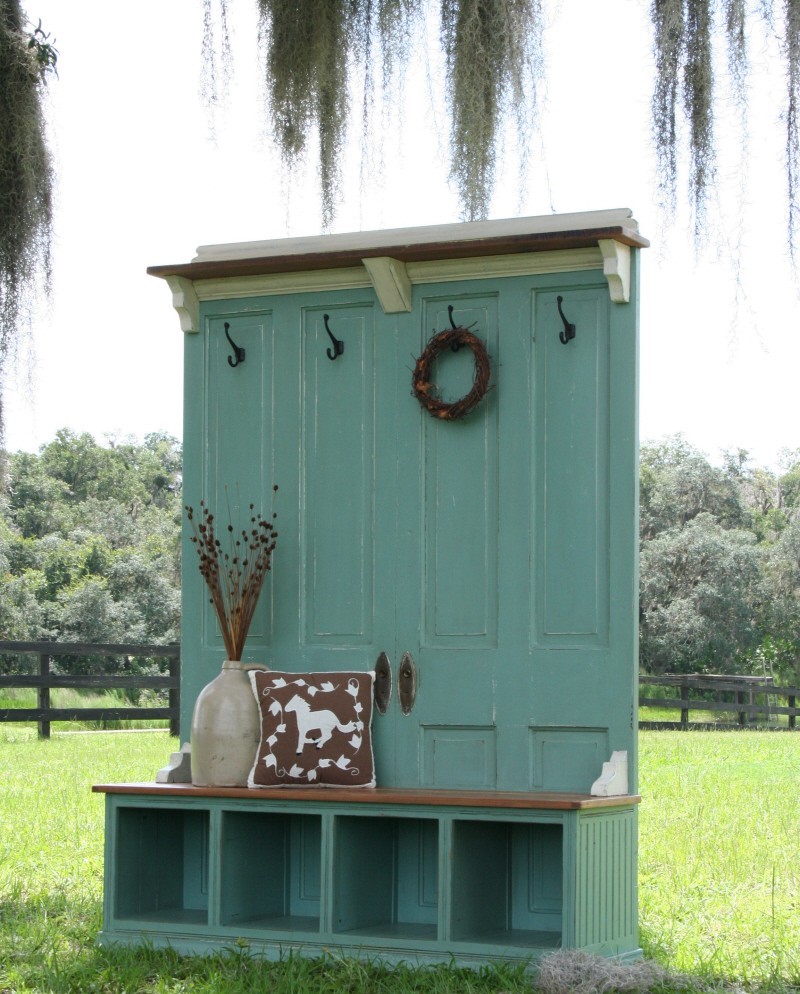


Design Variations for Different Home Styles
Creating a door entry bench is a fantastic way to add both function and style to your home’s entryway. This versatile piece can be designed to fit any home style, from modern to farmhouse. Below are design variations tailored to different home aesthetics. With a few adjustments in materials, finishes, and details, you can customize a door entry bench that perfectly complements your decor.
Modern Minimalist
Sleek Lines and Neutral Colors: For a modern minimalist home, opt for a door entry bench with clean lines and a simple silhouette. Use doors with minimal detailing and paint them in neutral shades like white, black, or gray. Matte finishes on both the paint and hardware will enhance the contemporary feel.
Rustic Farmhouse
Distressed Wood and Warm Tones: A rustic farmhouse door entry bench should embody warmth and character. Choose doors with natural wood finishes or paint them in creamy whites or soft grays, then distress the edges for a lived-in look. Adding wrought iron hooks and a bench cushion in a classic plaid or striped fabric will tie the look together.
Industrial Chic
Metal Accents and Dark Woods: For an industrial vibe, incorporate metal elements into your door entry bench. Use doors with metal insets or add metal brackets and hardware for contrast. Stain the wood in dark tones to complement metal details. A wire basket underneath for shoe storage can enhance the industrial feel.
Coastal Retreat
Light Woods and Nautical Details: Capture the essence of a coastal retreat with a door entry bench painted in light, airy colors like soft blues, greens, or classic white. Use beadboard or shiplap doors for added texture. Hooks in shapes of sea creatures and a bench cushion in a nautical stripe complete the coastal look.
Bohemian Eclectic
Vibrant Colors and Mixed Textures: A bohemian-style door entry bench is all about mixing colors, patterns, and textures. Paint your bench in vibrant hues or decoupage it with patterned fabric or wallpaper. Add eclectic hooks of different styles and colors. A cushion covered in a globally-inspired fabric and a mix of throw pillows will enhance the boho vibe.
Traditional Elegance
Classic Details and Rich Finishes: A traditional door entry bench should have elegant lines and rich finishes. Choose doors with raised panels or intricate carvings. Paint or stain the bench in classic colors like navy, deep red, or forest green. Brass or gold-toned hooks and a luxurious velvet cushion add a touch of opulence.
Scandinavian Simplicity
Functional Design and Light Colors: Embrace Scandinavian simplicity with a door entry bench that features functional design and light, muted colors. Opt for clean lines and a practical layout with plenty of storage. Use light woods and add a soft wool or faux fur cushion for comfort and warmth.
Vintage Charm
Antique Finishes and Feminine Details: For a bench that exudes vintage charm, choose doors with antique finishes or patinas. Paint in soft pastels and add delicate details like glass knobs for hooks and a floral or lace bench cushion. A vintage door entry bench can add a nostalgic touch to your entryway.
No matter your home style, a door entry bench can be customized to suit your decor. It’s a project that not only adds practicality to your space but also allows you to express your personal style right at your doorstep.
Advanced Customization Ideas
Adding a door entry bench to your home not only serves a practical purpose but also offers a canvas for creativity and personal expression. For those looking to take their DIY projects to the next level, advanced customization can transform a simple bench into a masterpiece that reflects your unique style and meets your specific needs.
Here are some advanced customization ideas to inspire your next project.
Incorporate Smart Storage
Elevate the functionality of your door entry bench by integrating smart storage solutions. Consider designing a seat that lifts to reveal a hidden storage compartment, perfect for stowing away seasonal items or bulky accessories. Additionally, pull-out drawers or baskets can offer easy access to shoes and everyday essentials, keeping your entryway clutter-free and organized.
Add Lighting Elements
Enhance the ambiance and utility of your entryway by incorporating lighting into your door entry bench. LED strip lights can be installed under the bench or within compartments to illuminate the space softly. For a more decorative touch, consider attaching sconces to the sides of the bench, adding both light and elegance to your entryway.
Create a Tech-Friendly Space
In the era of technology, a tech-friendly door entry bench can be a game-changer. Equip your bench with built-in charging stations or USB ports, allowing you and your guests to easily charge devices upon entering or leaving the house. Small compartments or drawers dedicated to storing and organizing tech accessories can also be incredibly useful.
Experiment with Textures and Materials
Go beyond paint and wood finishes by experimenting with various textures and materials. Consider adding a tiled mosaic on the seat surface for durability and style, or upholstering the seat with a rich, textured fabric for added comfort and visual depth. Metal accents, such as brass or copper legs, can introduce an industrial or luxurious element to your bench.
Personalized Artwork and Carvings
Make your door entry bench truly one-of-a-kind by incorporating personalized artwork or carvings. Whether it’s a family crest, a favorite quote, or a custom design that reflects your hobbies or interests, these unique touches will make the bench more than just a piece of furniture—it becomes a conversation starter and a cherished heirloom.
Multi-functional Design
For those with limited space or a love for multifunctional furniture, design your door entry bench to serve multiple purposes. Consider a fold-out design that can transform from a bench into a table for mail sorting or casual dining. Alternatively, adjustable shelving or hooks can adapt to various storage needs throughout the year.
Eco-Friendly Upgrades
Commit to sustainability in your advanced customization by choosing eco-friendly materials such as reclaimed wood, bamboo, or recycled metal. Non-toxic paints and finishes can protect your health and the environment. Additionally, integrating planters into or alongside your bench can bring a touch of nature to your entryway while supporting green living.
Advanced customization of your door entry bench allows you to blend functionality with personal flair, creating a welcoming space that meets your needs and showcases your creativity. With these ideas as a starting point, the possibilities are endless for what you can create.
Conclusion
Building a door entry bench is a creative and practical project that enhances the functionality and aesthetic appeal of your entryway. It offers an opportunity to repurpose materials and add personal touches that reflect your style. This DIY endeavor not only provides storage and seating solutions but also welcomes guests with a unique piece that tells a story.
If you liked this project, you will also like viewing these furniture ideas…








